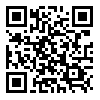
International Journal of Molecular and Cellular Medicine (IJMCM)
Cellular and Molecular Biology Research Center, Babol University of Medical Sciences
سه شنبه 9 دی 1404
[Archive]
دوره 12، شماره 4 - ( 7-1402 )
|
برگشت به فهرست نسخه ها
Download citation:
BibTeX | RIS | EndNote | Medlars | ProCite | Reference Manager | RefWorks
Send citation to:



BibTeX | RIS | EndNote | Medlars | ProCite | Reference Manager | RefWorks
Send citation to:
Rani Sri Prakash S, Kamalnath S M, Antonisamy A J, Marimuthu S, Malayandi S. In Silico Molecular Docking of Phytochemicals for Type 2 Diabetes Mellitus Therapy: A Network Pharmacology Approach. Int J Mol Cell Med 2023; 12 (4) :372-387
URL: http://ijmcmed.org/article-1-2091-fa.html
URL: http://ijmcmed.org/article-1-2091-fa.html
In Silico Molecular Docking of Phytochemicals for Type 2 Diabetes Mellitus Therapy: A Network Pharmacology Approach. مجله بین المللی سلولی و مولکولی. 1402; 12 (4) :372-387
: (2903 مشاهده)
Identification of potential lead molecules in herbal medicines is crucial not only for validation but also for drug discovery. This study was focused on identifying the therapeutic mechanisms of 10 common herbs used to treat type 2 diabetes mellitus (T2DM) using network pharmacology and docking studies. Details pertaining to medicinal plants and their phytoconstituents were obtained from Indian Medicinal Plants, Phytochemistry, and Therapeutics and Dr. Duke’s database, respectively. MolSoft was used to assess their drug likeness. Prediction of protein targets for the screened phytochemicals and the list of target genes involved in T2DM were obtained using Swiss TargetPrediction and GeneCards respectively. STRING; Cytoscape; Database for Annotation, Visualization, and Integrated Discovery; and PyRx were used for network construction, network analysis, gene ontology analysis, and molecular docking, respectively. The protein targets MAPK1, AKT1, PI3K, and EGFR were identified to play a crucial role in the progression of T2DM. Furthermore, molecular docking indicated that nimbaflavone exhibited high binding affinities for MAPK1 (−8.7 kcal/mole) and PI3K (−9.6 kcal/mole), whereas rutin and 10-hydroxyaloin-B showed high binding affinities for AKT1 (−7.4 kcal/mole) and EGFR (−8.1 kcal/mole), respectively. The findings from this study suggest that flavonoids are the major phytoconstituents that display antidiabetic activity by interacting with key protein molecules related to the MAPK and PI3K-AKT signaling pathways, thereby aiding in the treatment of T2DM. The activation of these pathways alters Ras-GTPase activity and enhances the expression of GLUT4, a glucose transporter, resulting in the uptake of glucose from the bloodstream.
نوع مطالعه: Original Article |
موضوع مقاله:
Bioinformatic
دریافت: 1401/11/9 | پذیرش: 1402/11/16 | انتشار: 1403/2/31
دریافت: 1401/11/9 | پذیرش: 1402/11/16 | انتشار: 1403/2/31
| بازنشر اطلاعات | |
 |
این مقاله تحت شرایط Creative Commons Attribution-NonCommercial 4.0 International License قابل بازنشر است. |



